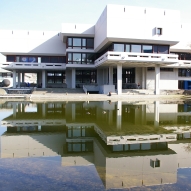Zusammenfassung
Background: Patients with LIS1-associated classic lissencephaly typically present with severe psychomotor retardation and drug resistant epilepsy within the first year. Aim: To analyze the epileptogenic phenotype and response to antiepileptic therapy in LIS1-associated classic lissencephaly. Method: Retrospective evaluation of 22 patients (8 months-24 years) with genetically and radiologically ...
Zusammenfassung
Background: Patients with LIS1-associated classic lissencephaly typically present with severe psychomotor retardation and drug resistant epilepsy within the first year. Aim: To analyze the epileptogenic phenotype and response to antiepileptic therapy in LIS1-associated classic lissencephaly. Method: Retrospective evaluation of 22 patients (8 months-24 years) with genetically and radiologically confirmed LIS1-associated classic lissencephaly in 16 study centers. Results: All patients in our cohort developed drug-resistant epilepsy. In 82% onset of seizures was noted within the first six months of life, most frequently with infantile spasms. Later in infancy the epileptogentic phenotype became more variable and included different forms of focal seizures as well generalized as tonic clonic seizures, with generalized tonic clonic seizures being the predominant type. Lamotrigine and valproate were rated most successful with good or partial response rates in 88-100% of the patients. Both were evaluated significantly better than levetiracetam (p < 0.05) and sulthiame (p < 0.01) in the neuropediatric assessment and better than levetiracetam, sulthiame (p < 0.05) and topiramate (p < 0.01) in the family survey. Phenobarbital and vigabatrin achieved good or partial response in 62-83% of the patients. Conclusion: Our findings suggest that patients with LIS1-associated lissencephaly might benefit most from lamotrigine, valproate, vigabatrin or phenobarbital. (c) 2015 The Japanese Society of Child Neurology. Published by Elsevier B.V. All rights reserved.






 Altmetric
Altmetric